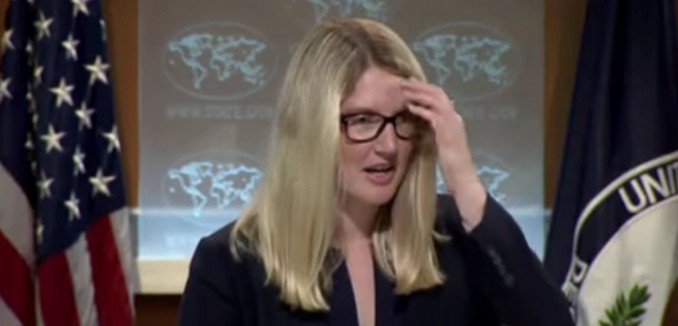Administration officials have spent the last two days attacking a Tuesday report in The New York Times that Iran’s stockpile of low enriched uranium (LEU) is now 20% greater than when it signed the Joint Plan of Action (JPOA) in November 2013. The Times article noted that the growth of that stockpile contradicted the administration’s claim that the JPOA had “frozen” Iran’s nuclear program. The article also noted that Iran will not only have to reduce its stockpile to 7,650 kilograms by the June 30 JPOA deadline, but will likely have to reduce it significantly further—to just 300 kilograms—in the coming months as part of the reported terms of a final deal.
The problem, is as the Times reported:
The overall increase in Iran’s stockpile poses a major diplomatic and political challenge for President Obama and Secretary of State John Kerry, who flew back to the United States from Geneva on Monday for treatment of a broken leg he suffered in a bicycling accident, as they enter a 30-day push to try to complete an agreement by the end of June. In essence, the administration will have to convince Congress and America’s allies that Iran will shrink its stockpile by 96 percent in a matter of months after a deal is signed, even while it continues to produce new material and has demonstrated little success in reducing its current stockpile.
The Times also acknowledged that the JPOA had slowed Iran’s known nuclear progress.
There is little doubt that in the absence of the interim accord, called the “Joint Plan of Action,” Iran would have made even greater strides. But the numbers published Friday by the atomic energy agency show that Iran has continued to enrich uranium aggressively, even though it knew that it was not meeting its goals of converting its stockpile into reactor rods.
The reporting in The New York Times was based on the most recent International Atomic Energy Agency report on Iran’s compliance, as well as an analysis (.pdf) of the report performed by the Institute for Science and International Security, a leading think-tank specializing in nuclear non-proliferation.
State Department Spokeswoman Marie Harf responded on Twitter, with a series of tweets calling a number of assertions in the article “not true.”
.@SangerNYT You write that "The overall increase in Iran’s stockpile poses a major diplomatic and political challenge" – not true
— Marie Harf (@marieharf) June 3, 2015
Harf’s attacks prompted questions at her news briefing yesterday. She claimed (incorrectly) that the Times had called the matter of reducing Iran’s LEU stockpile “an obstacle,” and then explained why the technical challenge of reducing Iran’s LEU stockpile was not even a challenge.
There’s a separate question, which is how they will get down to 300 kilograms. There are a couple of different ways they can do that: one is shipping it out; one is diluting it; one is selling it on the open market. We’re working with them for what that will look like, but that’s also really not – to be honest, Matt, that’s not really an obstacle in the room. It’s an outstanding issue, but it’s not an obstacle to getting to a deal here.
Harf offered a number of options for Iran to reduce its stockpile to the level it has apparently committed to. The easiest of those mentioned is to ship it out, but as the Times reported, Iran refuses to take this route.
Harf wasn’t the only administration official to attack to the report in The New York Times. Deputy National Security Adviser Ben Rhodes also pushed back via Twitter.
Richard Nephew reaffirms Iran has not violated JPOA and has consistently met its obligation to cap stockpile on time http://t.co/Rwg6S10unw
— Ben Rhodes (@rhodes44) June 3, 2015
The central contention of The New York Times article was not that Iran had violated the JPOA, but that by “enrich[ing] uranium aggressively,” Iran had made it much more difficult to meet the goals it was required to meet as part of the interim deal and for an emerging permanent deal.
With less than a month to go before the next deadline, Iran appears to be moving further away from an agreement.
The Times offered a few possible explanations for Iran’s growing LEU stockpile, including “increasing its stockpile to give it an edge if the negotiations fail.”
[Photo: Washington Free Beacon / YouTube ]




